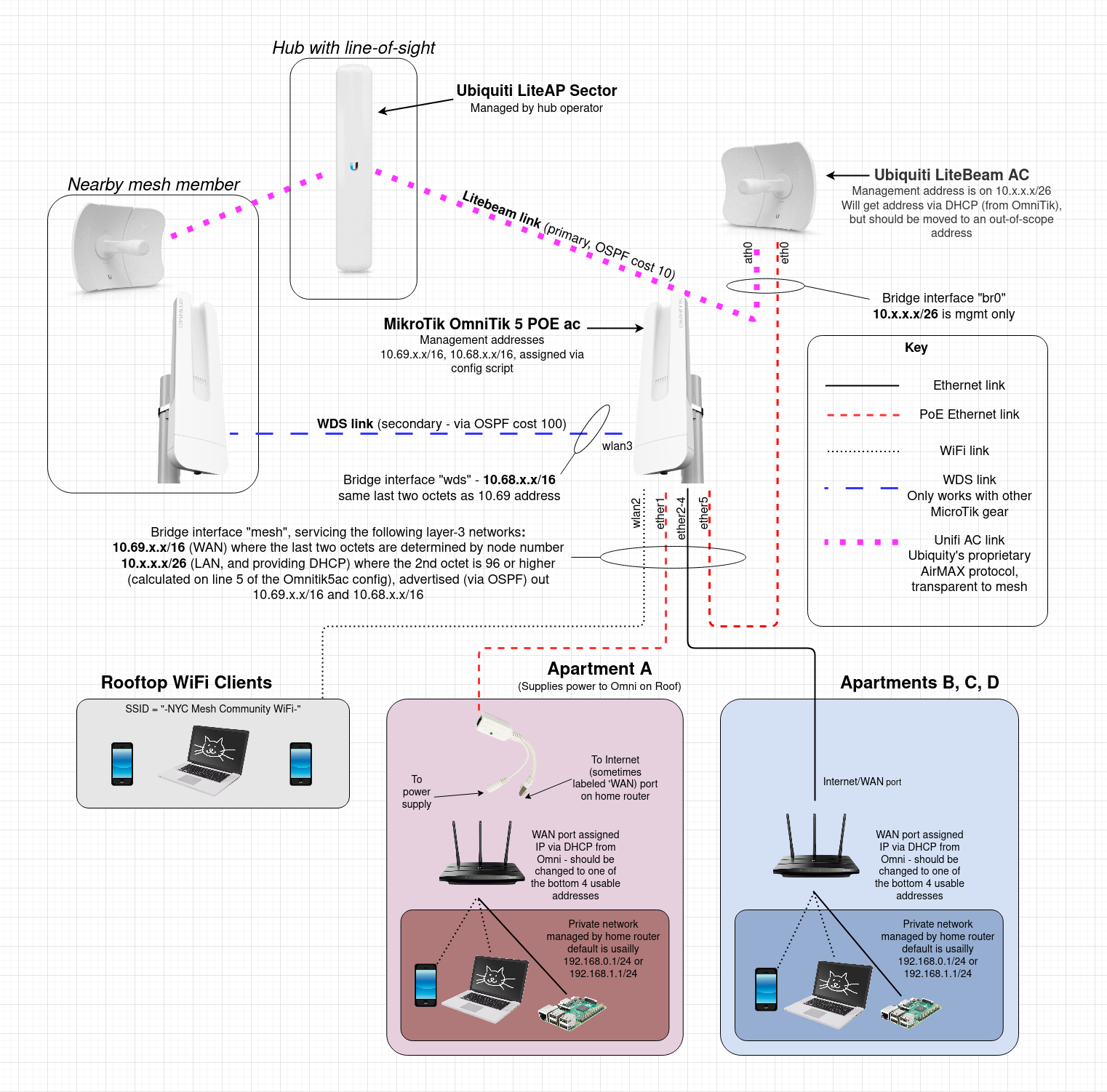Typical Install Diagrams
The purpose of thisthese diagramdiagrams isare to give a technical overview of the routing of a typical LiteBeammesh +node, Omnitik5acas installshown described inon the Typical Installations pagePage.
There -are scenariotwo 2installation
types that are generally seen in the mesh network:
- Installs with an OmniTik and a LiteBeam
- Installs with only an OmniTik (Often referred to as "omni-only" by mesh volunteers)
Omnitik and a LiteBeam:
NOTES
-
The last two octets of the 10.68.x.x/16 and 10.69.x.x/16 (mesh backbone) addresses are determined by node number
-
The last three octets of the 10.x.x.x/26 (member side of the OmniTik) network are also determined by node number and are calculated by the OmniTik5ac config on line 5. Each NYC Mesh LiteBeam/OmniTik installation has one of these unique /26 networks on the member side of its OmniTik. The OmniTik provides DHCP to this network, with the bottom and top 5 usable addresses being left out of the scope (for static assignment to home-routers, LiteBeam management etc). DNS is provided by 10.10.10.10. This 10.x.x.x/26 network is redistributed to the mesh backbone via OSPF.
-
This diagram was created on app.diagrams.net (formerly draw.io). The diagram source is attached to this page.


